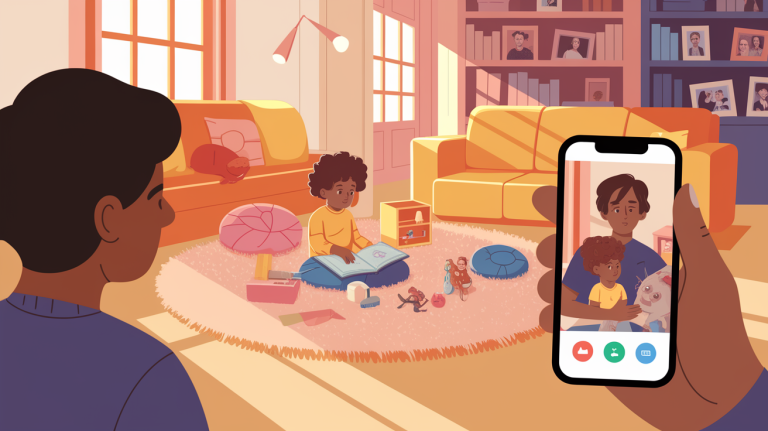Big Changes, Little Minds: Helping Kids Cope With Life’s Transitions

Change is part of life, but some people bounce back faster than others; the journeys can be particularly challenging for children who thrive on consistency and predictability.
Major life transitions like moving to a new home, starting at a different school, or adjusting to family changes can shake a child’s sense of security. As parents, your loving, steady guidance through these times can make all the difference.
Preparing Kids Emotionally Before the Transition
Children need time to process upcoming changes, so instead of surprising them with big news at the last minute, bring them into the conversations early.
Start with simple, age-appropriate explanations about the reason for the change, what will stay the same, and what will change. Validate their feelings and let them know all emotions are acceptable. Use drawings, stories, and play to help younger children understand what’s happening.
Answer questions honestly, even if the answer is “I don’t know yet, but we’ll figure it out together.” Point out positive aspects of the change without dismissing concerns. As the transition day approaches, use visual aids to help kids get the bigger picture. For example, a colorful countdown calendar works beautifully; it’s a tangible representation of how each day will unfold.
While protecting their emotional well-being, remain vigilant about their physical safety during transitions. Ensure that they’re in a proper car seat or buckled up when in the car; watch over food safety, since you might be eating at restaurants or ordering a lot of takeout during these busy times. If they’ll be attending a new school or switching to a new healthcare provider, take the time to vet the safety policies.
Practical Tips for Managing the Moving Process

Keeping your child in the loop about an upcoming move is half the battle. Moving days are typically chaotic, but planning for your child’s emotional needs can ease the transition.
If your child seems withdrawn, start conversations about the move and answer their questions honestly. Set timers for regular check-ins with them on moving day to see how they’re doing. Let them help with simple packing tasks; they can also decide how to set up their new room.
Before, during, and after the moving process, try to stick with their routines as much as possible; for example, if they go to bed at 8 p.m. each night, adhere to that time as best you can.
Teaching Kids How To Stay Safe During Changes
Major life changes like moving or family shifts disrupt routines, making kids more vulnerable to unfamiliar people or situations. That’s why teaching your kids safety education is critical during these times.
Your family will make countless new connections during life transitions, so teach your kids to have their radar on for manipulative behaviors. An unfortunate but very real truth: Some predators hide behind veils of politeness, offering help while hiding other intentions. Role-play scenarios where your children might need to assert boundaries or seek help, and teach them to trust their instincts if something doesn’t feel right.
Here are age-appropriate ways to help children practice setting boundaries and understand personal space:
- The hula hoop exercise: Use hula hoops to visualize personal space bubbles and practice asking permission before entering someone else’s space.
- Body autonomy practice: Make asking permission for hugs or physical play a regular routine, reinforcing that it’s always okay to say “no,” or “not right now.”
- Digital boundaries for teens: Teach teenagers to recognize grooming tactics, refuse requests for personal photos, and understand that safe relationships don’t require secrecy.
Other tips include discussing who the “safe adults” will be in your new community or situation, practicing calling for help or finding a trusted adult if needed, and creating a family code word for uncomfortable situations.
Helping Kids Settle In After the Move
The weeks after moving in set the tone for establishing a sense of belonging. If your children are old enough, let them guide the set-up of their room. If it’s a rental, they can select temporary decorations that you can remove later. Designate a play area for them, and continue sticking with their routines.
This idea is for the whole family: Schedule a small celebration for after the dust settles. That’ll give everyone something to look forward to, and it needn’t be fancy. Try an outdoor picnic, a movie night, or a trip to a local lake. Any of these will make the transition more exciting and memorable.
And as soon as possible, walk them through the new neighborhood on a nice day when kids their age are more likely to be playing outside. Model safe behavior; don’t approach them if you don’t see their parents or caregivers nearby. Find nearby playgrounds, show them the new school, and take them to the grocery store. These steps will all form connections.
Supporting Children Through Family Dynamic Changes
Changes in family structure create emotional transitions that require special attention for little ones. Keep them in the loop and find small ways to give them appropriate control, like choosing which toys to travel with. Children benefit from hearing that family changes aren’t their fault and that the adults are working together to care for them.
Prioritizing their safety and regular check-ins is essential for creating a sense of security. But remember that regression to earlier behaviors is common during major transitions. A temporarily clingy child or one who returns to thumb-sucking isn’t failing. They’re communicating their need for extra security during an uncertain time.






